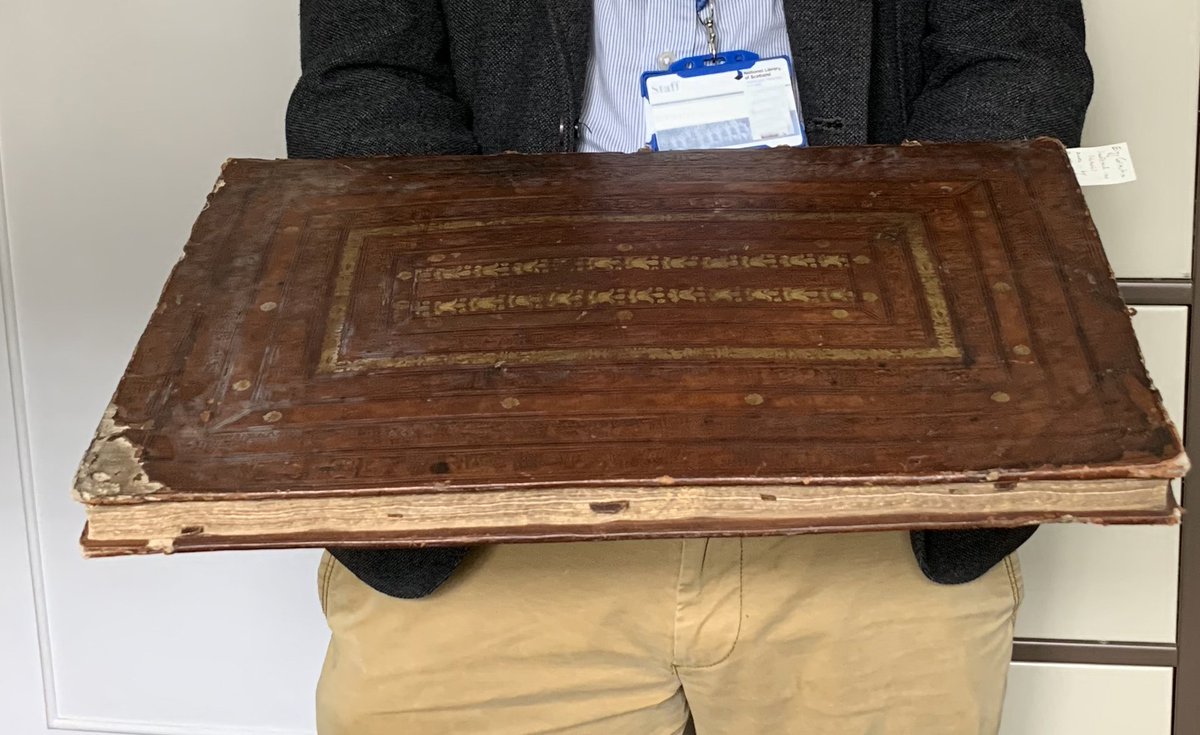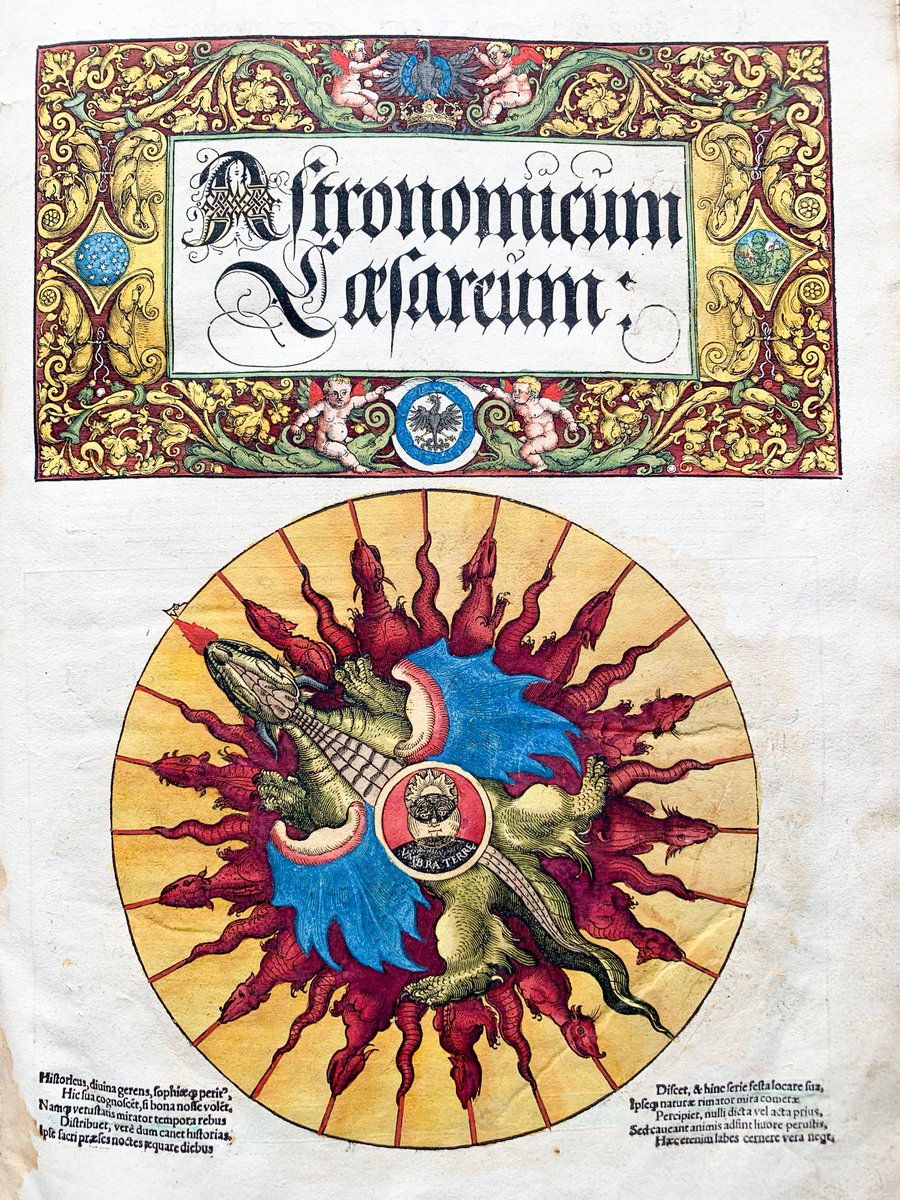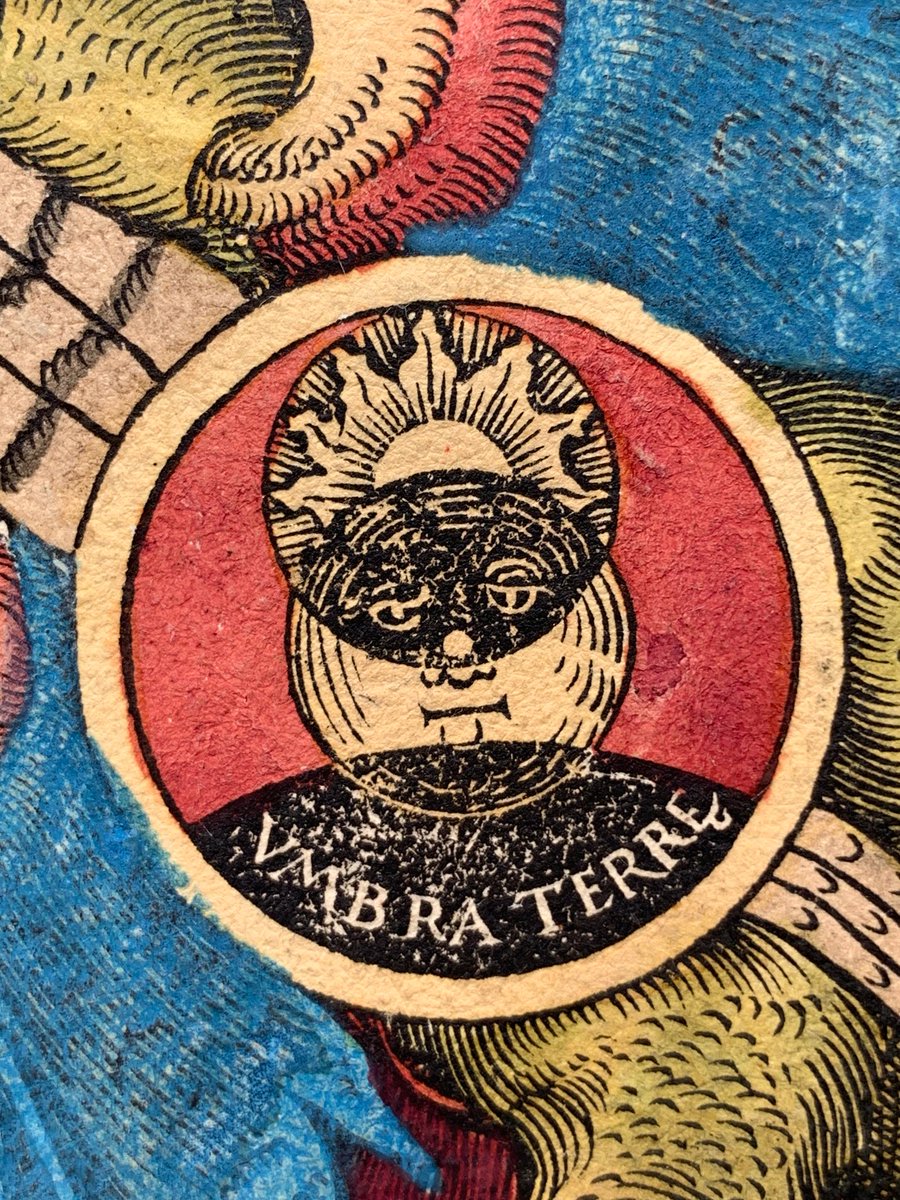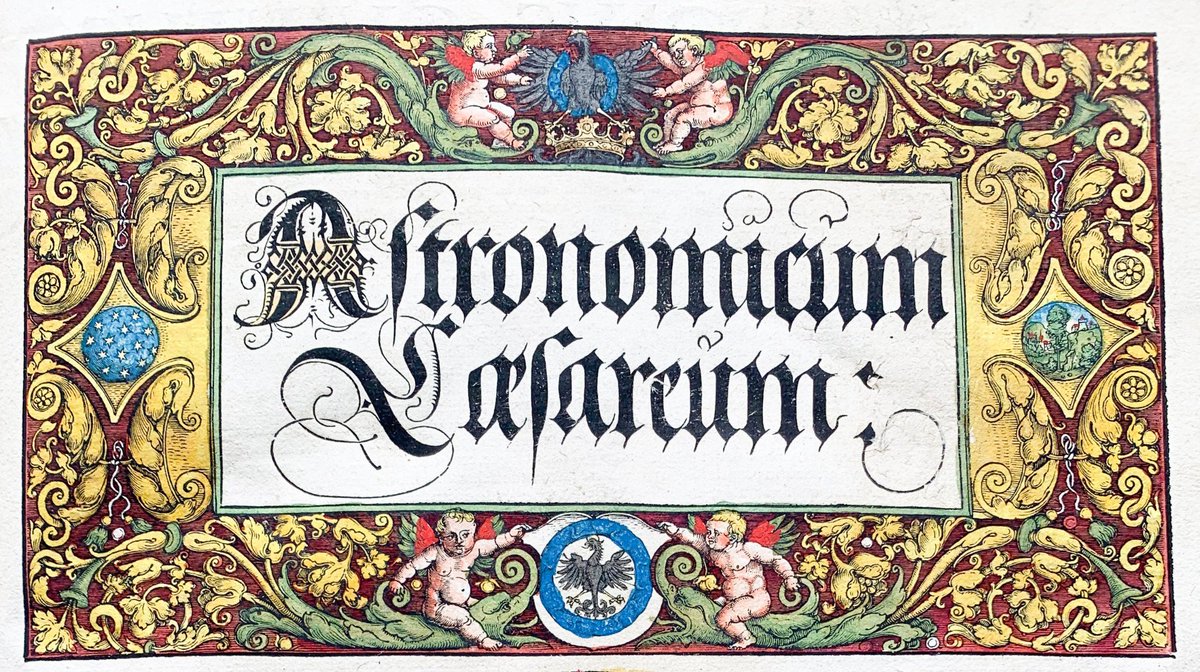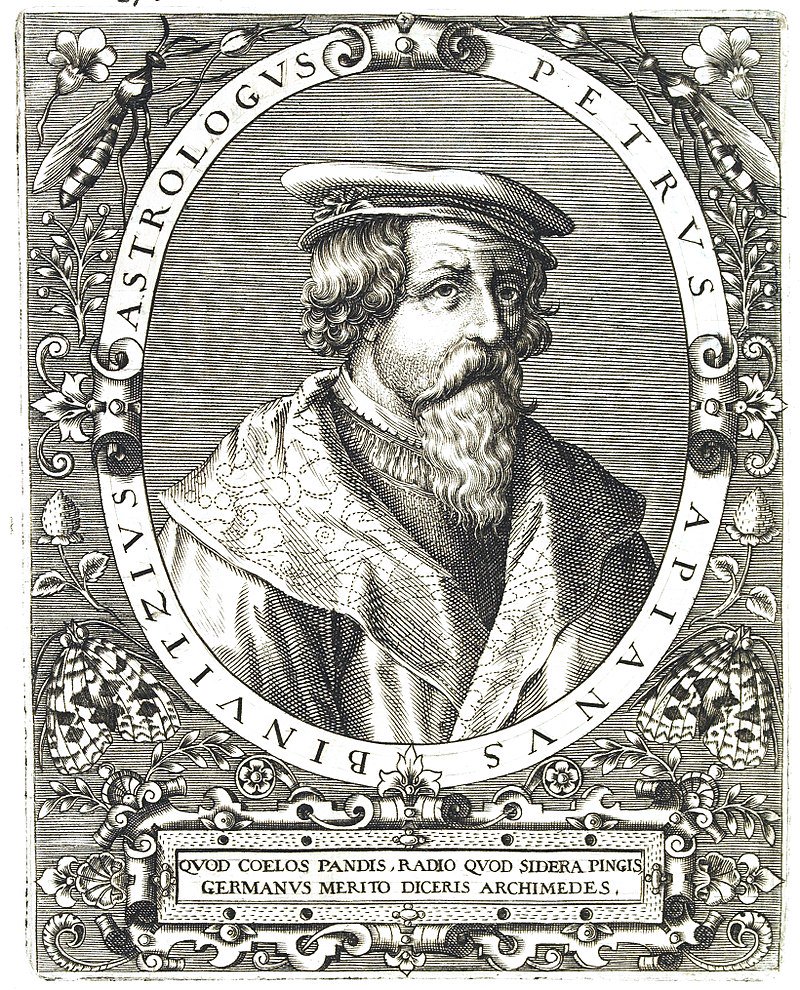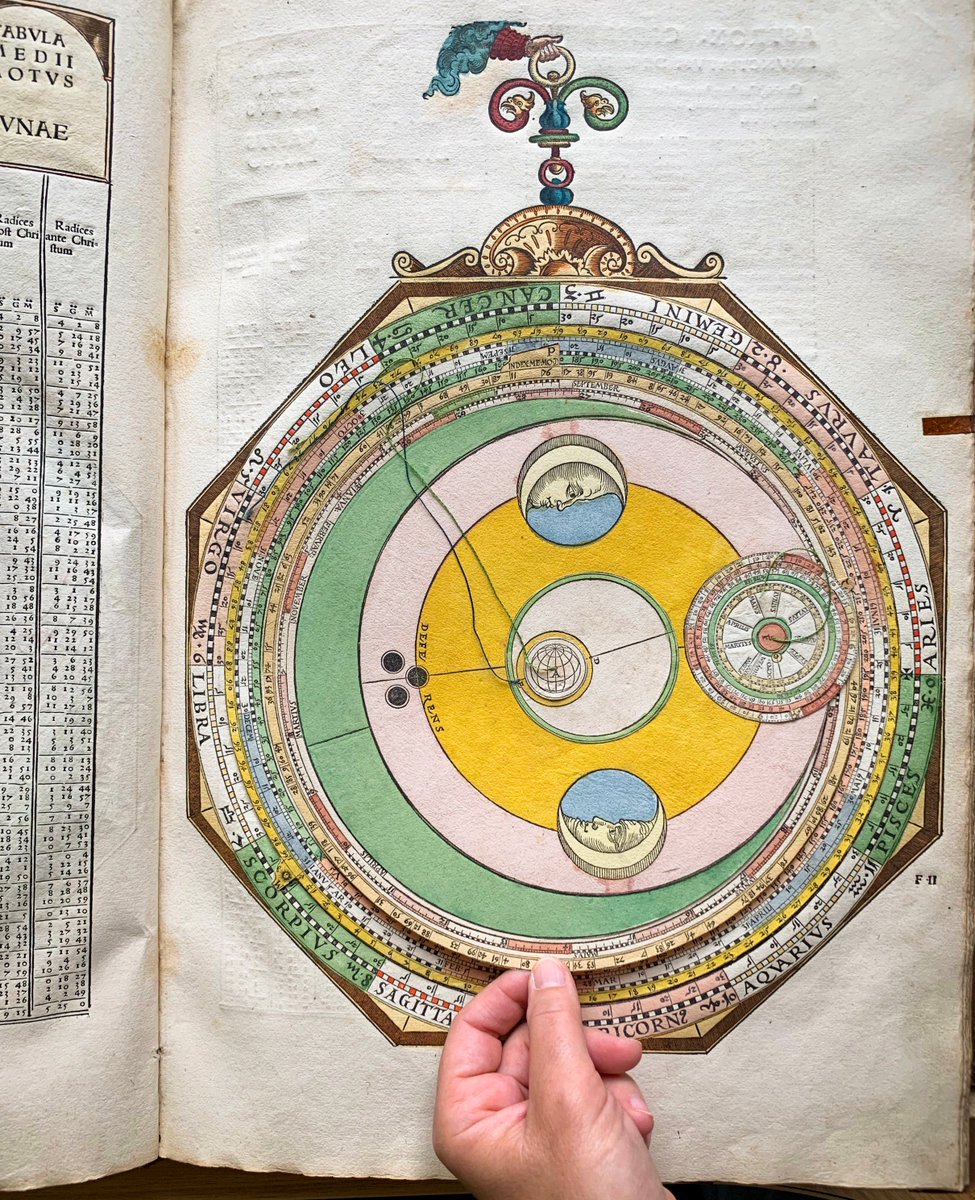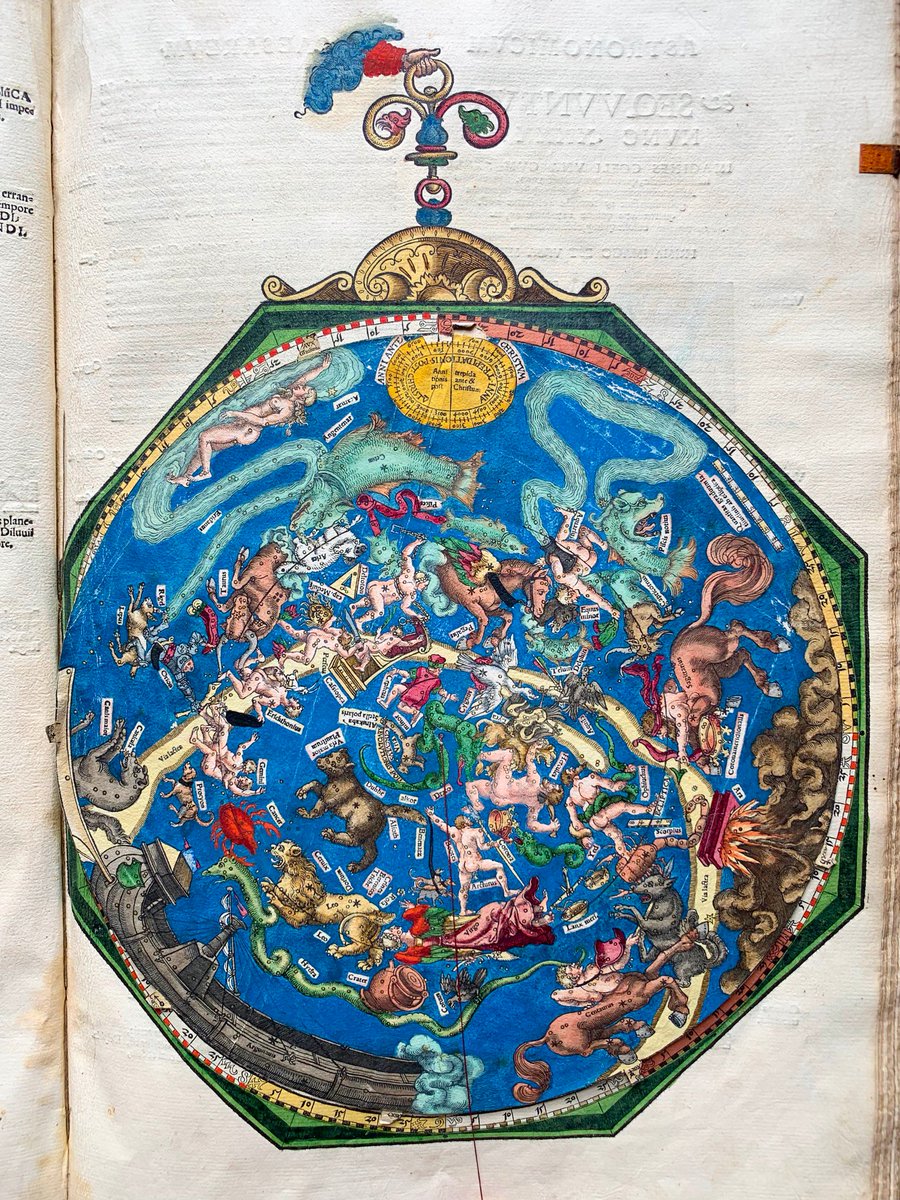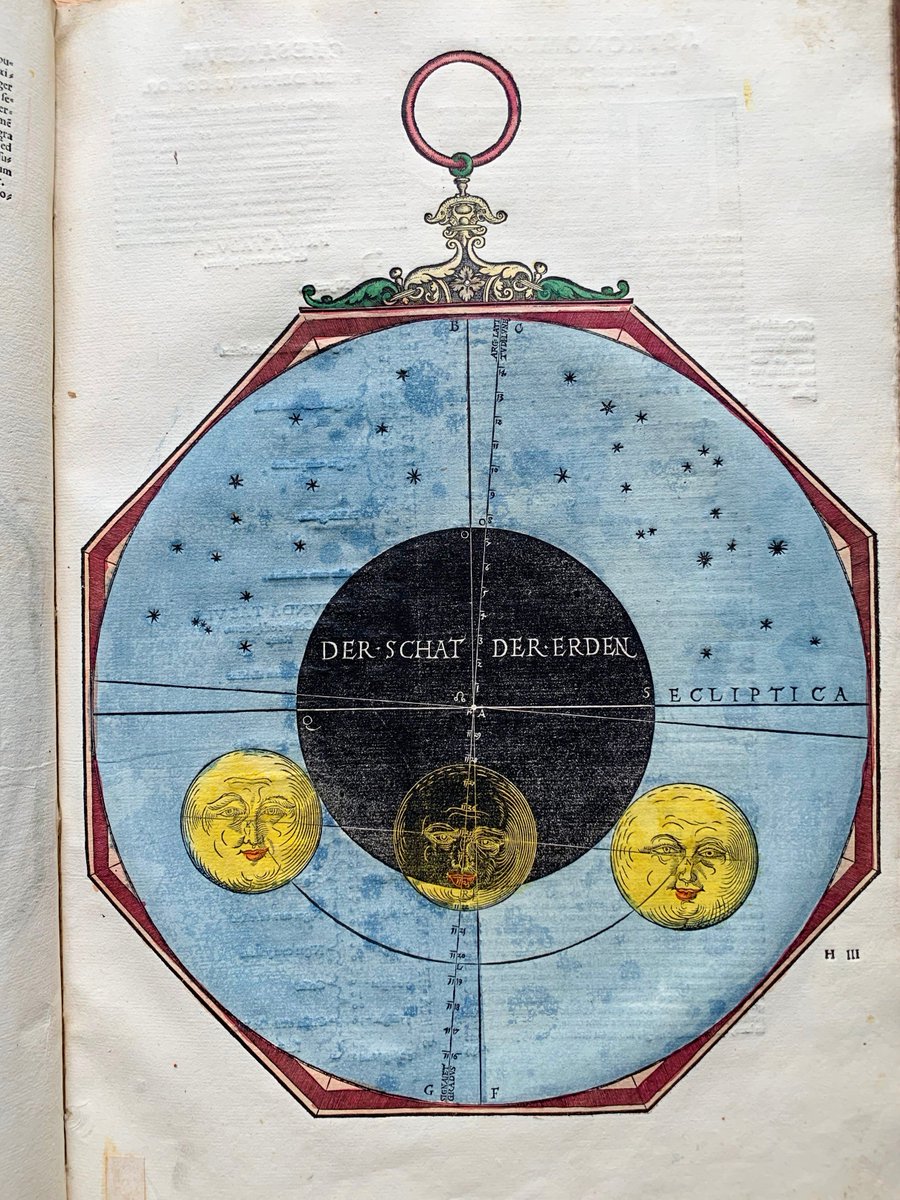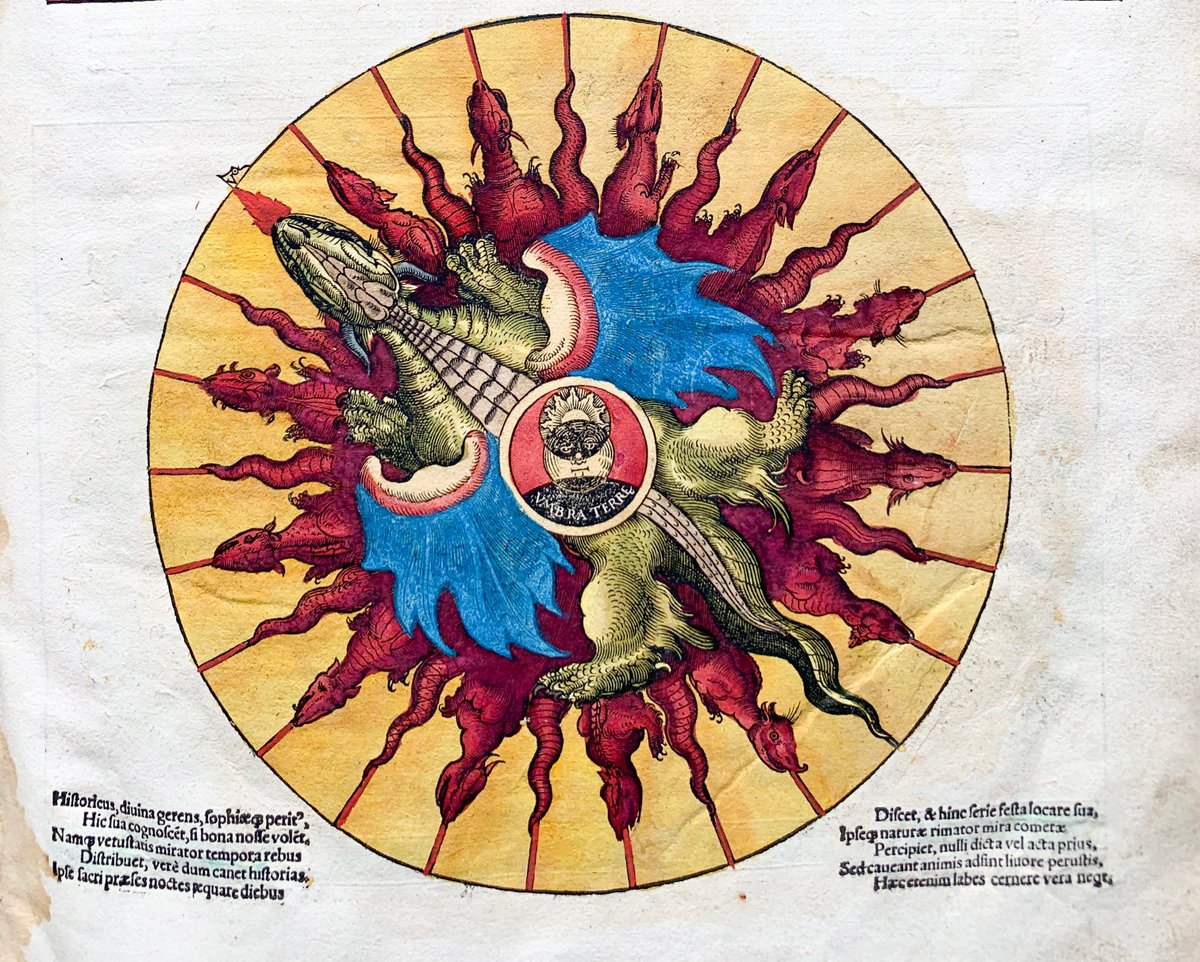So here& #39;s a thread about a rather nice book which is not hugely special on the outside...
(Batman says hi by the way)
N.B. We tried to tag Batman but Twitter says that Batman can& #39;t be tagged in photos. That& #39;s just how the Dark Knight rolls, we guess.
N.B. We tried to tag Batman but Twitter says that Batman can& #39;t be tagged in photos. That& #39;s just how the Dark Knight rolls, we guess.
Anyhoo - this book is called ‘Astronomicum Caesareum’ (Caesars’ Astronomy) because it was dedicated to Charles V, Holy Roman Emperor, and his brother Ferdinand.
Astronomicum Caesareum was written by the humanist mathematician, astronomer, artist and printer Peter Apian (pictured here in a 16th century engraving) and was printed in Ingolstadt, Germany, in 1540.
(Image via: http://sil.si.edu/digitalcollections/hst/scientific-identity/fullsize/SIL14-A5-04a.jpg)">https://sil.si.edu/digitalco...
(Image via: http://sil.si.edu/digitalcollections/hst/scientific-identity/fullsize/SIL14-A5-04a.jpg)">https://sil.si.edu/digitalco...
The book was meant to be a kind of ‘astronomy made simple’. Apian wanted to make astronomy easy to understand for his patrons Charles V and Ferdinand, and thus used graphic or illustrative methods rather than mathematics for his explanations.
He adopted the astrolabe, a two-dimensional brass instrument used for astronomical observations, for the design of his volvelles, which are basically astrolabes made of paper.
And here’s a wee video of Astonomicum Caesareum’s Moon volvelle: which was used to determine the lunar longitude. Isn& #39;t it just a little bit  https://abs.twimg.com/emoji/v2/... draggable="false" alt="😍" title="Smiling face with heart-shaped eyes" aria-label="Emoji: Smiling face with heart-shaped eyes">?
https://abs.twimg.com/emoji/v2/... draggable="false" alt="😍" title="Smiling face with heart-shaped eyes" aria-label="Emoji: Smiling face with heart-shaped eyes">?
The book took some eight years to produce. It was used to calculate the celestial latitude and longitude of the planets and also cast horoscopes (this map of constellations in the book includes the signs of the zodiac - and is quite beautiful up close).
And this page shows the shadow of the Earth and the development of a lunar eclipse. The moon enters into the Earth& #39;s shadow and emerges again. While it is in the Earth’s shadow, we see a lunar eclipse.
And we’ve covered lunar longitude in the video above so here’s a volvelle used to calculate the lunar *latitude* (‘dragon calculation’ https://abs.twimg.com/emoji/v2/... draggable="false" alt="😉" title="Winking face" aria-label="Emoji: Winking face">)
https://abs.twimg.com/emoji/v2/... draggable="false" alt="😉" title="Winking face" aria-label="Emoji: Winking face">)
To recap - a volvelle is a slide chart and a form of analog computer made of paper. In this book it performs the function of a two-dimensional astrolabe. And volvelles like the ones in this book have another thing going for them - they& #39;re beautiful.
Thanks for looking at the Astronomicum Caesareum with us and we& #39;ll leave you with the majesty of the dragon (and Batman). You can also browse this book online (thanks to the lovely @univienna) at http://www.univie.ac.at/hwastro/books/1540_apian_ColLow.pdf">https://www.univie.ac.at/hwastro/b...

 Read on Twitter
Read on Twitter